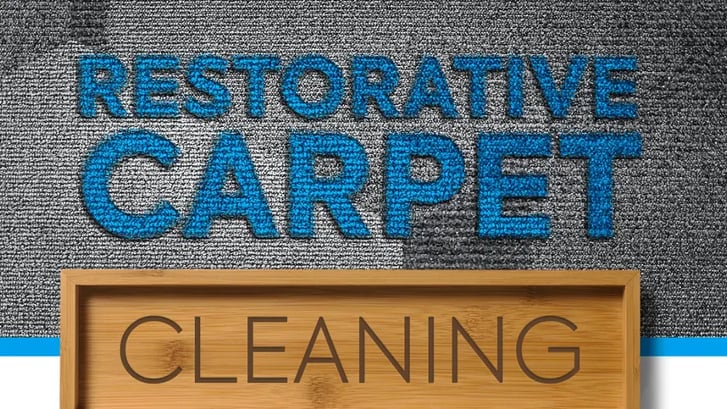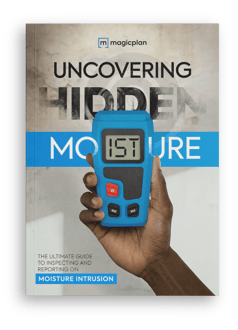Restoration
Restorative Carpet Cleaning: How to Ensure Clients’ Carpets Will Look Like New

As a restoration professional, you may often encounter job sites that have smelly, wet or unsightly carpet. Your primary goal in these situations is to restore the damaged carpet to its former glory, in order to create a healthy and aesthetically pleasing indoor environment.
The Difference Between Restorative Cleaning and Regular Cleaning
Restorative carpet cleaning is a specialized, professional carpet cleaning process designed to address severe problems. It involves a more intensive, multi-step process compared to general maintenance cleaning.
Types of Carpet Damage
Before delving into the restoration process, it's essential to recognize the different types of carpet damage. Common issues include stains, odors, deep-seated dirt, discoloration, matting, smoke damage, excessive moisture, and mold and mildew growth. Each of these issues requires a tailored approach for effective restoration.
Causes of Carpet Damage
Carpet damage can arise from myriad sources. So, identifying the root cause is crucial for successful outcomes. Some common causes include spills and stains from food, beverages, or chemicals; high foot traffic in specific areas; improper cleaning methods; excessive moisture from leaks or flooding; smoke soot and odors; pet pungency and stains; and even pest infestations. Understanding the cause of the damage enables you to select the most appropriate restorative techniques.
What to Keep in Mind Before You Begin
Consider these critical factors:
- Condition – Inspect the carpet to assess its age and quality, and determine the feasibility of restoration. Older, low-quality carpets may not respond well to restoration efforts and may require replacement.
- Warranties – Check for any manufacturer's warranties that could be voided by certain cleaning methods or equipment.
- Construction – Understanding the carpet's materials and construction will help you choose appropriate techniques, equipment and cleaning agents, so you can avoid further damage.
- Safety – Always prioritize safety for yourself, your crew, and occupants of the space. Ensure proper ventilation and use of protective gear when handling cleaning agents or dealing with mold and mildew.
How to Measure and Plan Carpet Restoration with a Floor Plan App
Using a floor plan app such as magicplan can be immensely beneficial for streamlining the restoration process. This type of carpet cleaning app allows you to measure and sketch any carpeted area quickly and accurately. Then you can insert notes to document the extent of damage in each room. You can even attach photos of damaged areas to enhance your documentation, whether you’re dealing with a self-pay scenario or a scene covered by an insurance claim.
Once your sketch is completed, use it to plan the restoration process and to estimate the amount of cleaning agents, equipment, and time needed for the project. This smart approach helps minimize waste and ensures a smooth workflow throughout the restoration process.

Different Restoration Techniques and Equipment to Use
- Inspection: Always perform a thorough pre-restoration inspection and conduct spot tests on inconspicuous areas. This will help you determine the best approach and avoid any unexpected reactions during the cleaning process.
- Initial Vacuuming: Remove dry soil and debris by using a powerful vacuum cleaner equipped with special attachments.
- Pre-treatment: This involves treating the carpet with specialized cleaning solutions or pre-sprays that help break down dirt, stains, and oily residues, allowing for more effective removal. These specialized products are usually stronger and have a higher pH, compared to everyday cleaning products. Also, sometimes the pre-treatment liquid is agitated into the carpet fibers using mechanical agitation tools or carpet brushes. This helps dislodge deep-seated dirt and stains.
- Hot-Water Extraction: Also referred to as steam carpet cleaning, this widely used technique involves injecting hot water and carpet cleaning solution into the carpet fibers – and then extracting the mixture, along with embedded dirt and stains, by using powerful suction. Hot-water extraction is highly effective in removing grime and sanitizing the carpet. In fact, most carpet manufacturers recommend hot-water extraction as the primary cleaning method for synthetic carpets.
- Encapsulation Cleaning: This innovative technique uses special synthetic detergents that crystalize when dry, forming a powder that be vacuumed away to leave the carpet fresh and clean. It is called encapsulation because dirt particles are encapsulated into the crystallized powder as the detergent dries. This method does not require significant amounts of water, and so it offers shorter drying times than some other methods.
- Bonnet Cleaning: Suitable for surface-level cleaning, this method employs a rotary machine with a heavy-duty spinning pad soaked in a cleaning solution to buff the carpet's surface, break up stains and absorb oil and dirt.
- Ozone Treatment: For carpets affected by smoke or strong odors, ozone treatment can be highly effective in neutralizing unwanted smells.
- Spot Treatment: Tenacious stains that remain after the initial cleaning may receive an additional spot treatment to achieve the best results.
- Padding Replacement: Carpets may suffer from water damage due to faulty plumbing, flooding and other unforeseen problems. Although excessively wet carpet may be salvageable, the padding underneath is likely to be damaged beyond repair. In that case, you should plan on replacing the padding.
Important Steps to Complete After Cleaning
Post-cleaning care is crucial to ensure longevity of your restoration efforts:
- Drying: Properly dry carpets after cleaning, using air movers and dehumidifiers as needed (and opening windows to promote air circulation, if possible, if outside humidity is low). Adequate drying is necessary because excess moisture can lead to mold growth or carpet delamination. Be aware that the amount of drying time can differ depending on the carpet material, indoor humidity level, and the type of technique that was used. Also, be sure to advise clients to avoid stepping on the carpet while it dries. Wet carpets can be slippery, creating a safety hazard. Plus, reducing foot traffic can prevent having fresh dirt tracked in from people’s shoes.
Read more: Why and How to Maximize Air Movement During Water Damage Cleanup
- Grooming: Groom the carpet fibers with rakes or other devices to restore their appearance and improve drying.
- Protecting: Advise clients to use doormats at entry points and to place protective pads under furniture legs to prevent future wear. You may also choose to offer a stain-protection treatment. And you’ll want to recommend regular maintenance to preserve the carpet's condition.
Conclusion
Restorative carpet cleaning is a skill that requires a deep understanding of different carpet damage types, their causes, and various restoration techniques. By using appropriate techniques and advanced equipment, you can achieve remarkable results that enhance the appeal and health of indoor spaces. Remember to prioritize safety, plan meticulously, and address post-cleaning care for long-lasting and satisfied clients. Your dedication to excellence in carpet restoration will leave a lasting impact on the people you serve!
READ MORE
Restoring Commercial Properties: Unique Challenges and Solutions
A Look at Specializing in Residential Biohazard Cleanup Services

Zuzanna Geib
Team Lead Marketing

